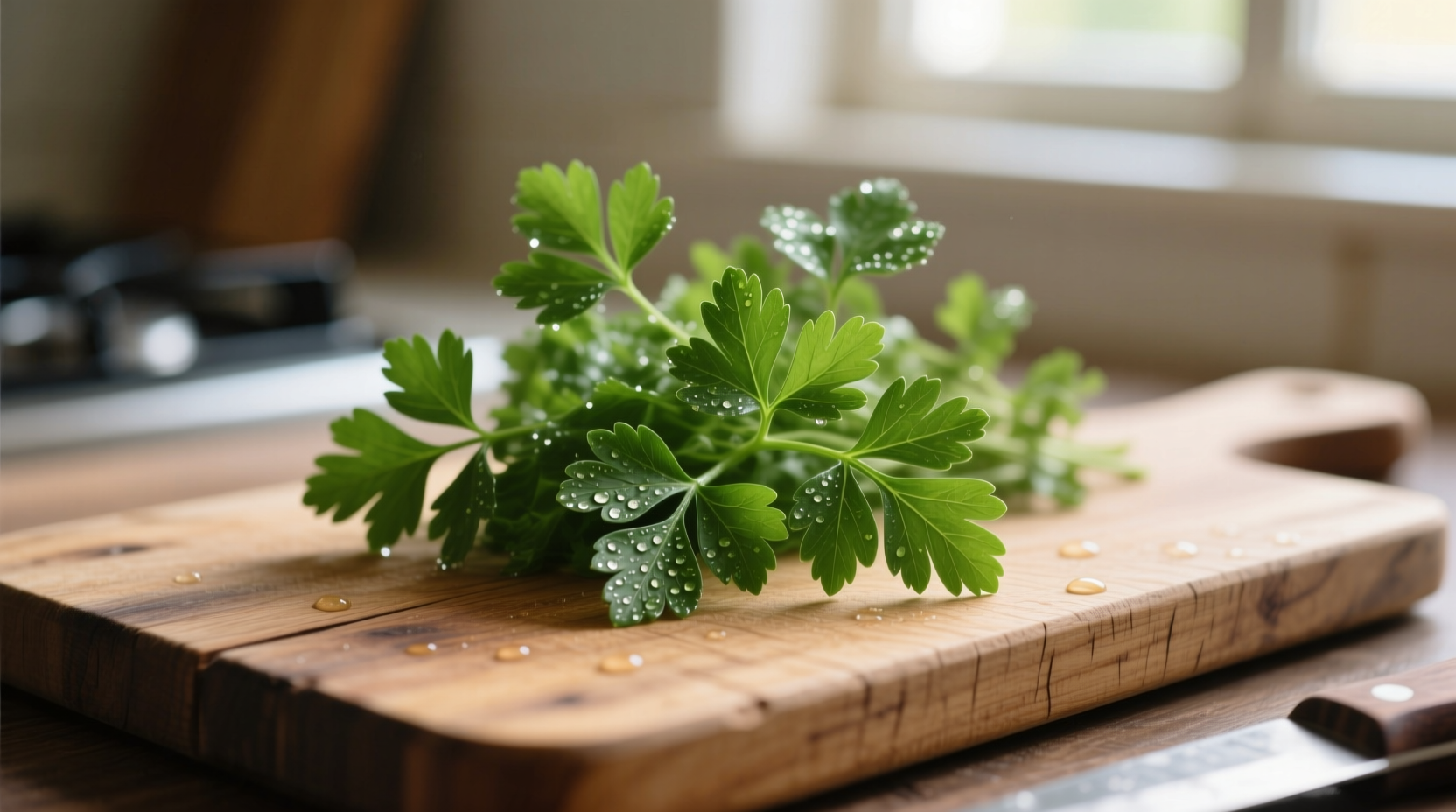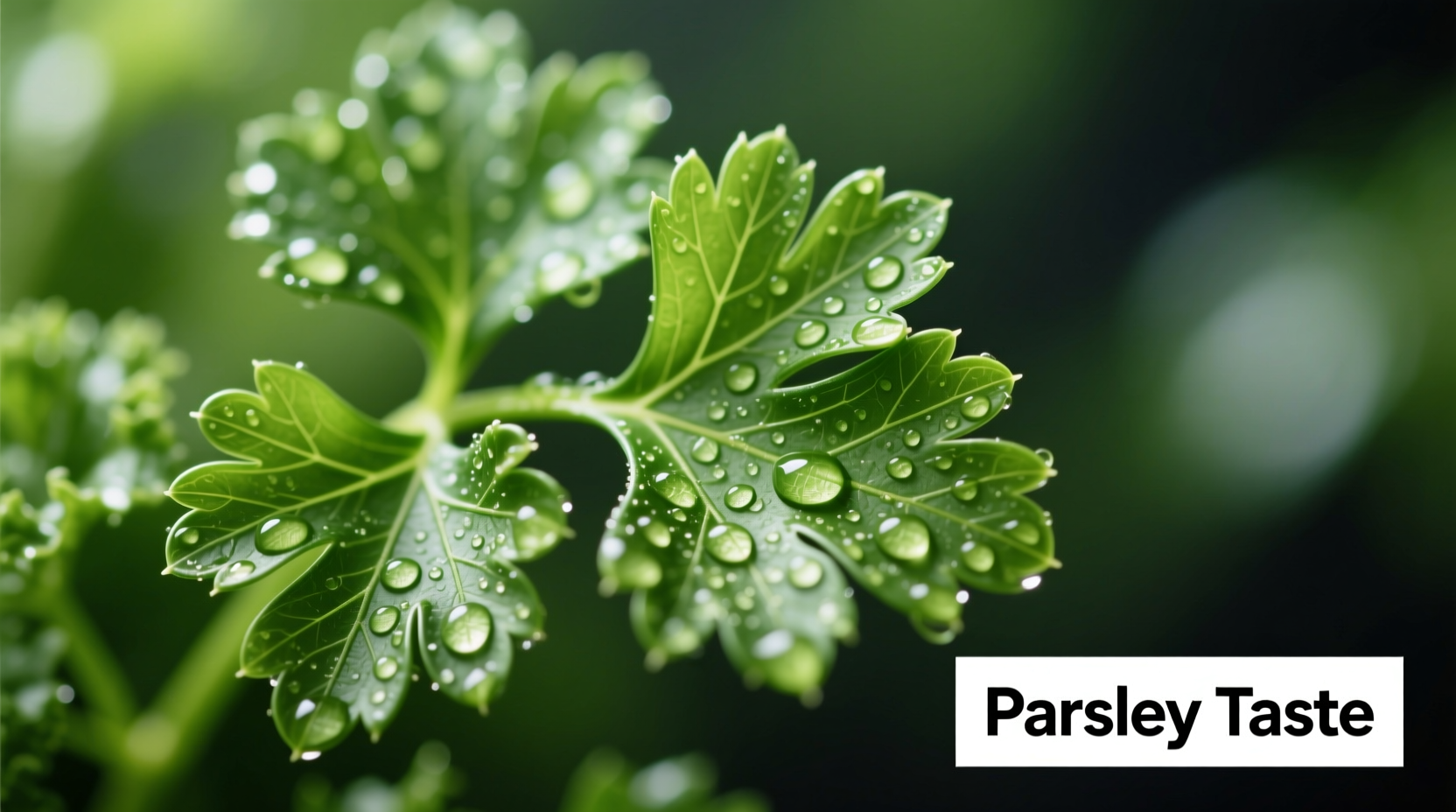If you've ever wondered what does parsley taste like, here's the direct answer: Fresh parsley delivers a clean, slightly peppery flavor with grassy, herbal notes and subtle citrus undertones. Unlike its stronger herb cousins, parsley offers a mild, refreshing taste that enhances rather than dominates dishes. Curly parsley tends to be more bitter with a sharper finish, while flat-leaf (Italian) parsley provides a more robust, earthy flavor with better oil retention for cooking.
The Complete Flavor Profile of Parsley: More Than Just a Garnish
Many home cooks dismiss parsley as merely a decorative plate accent, but understanding parsley taste characteristics reveals why professional chefs consider it essential. This humble herb contributes nuanced flavor dimensions that can transform ordinary dishes into extraordinary culinary experiences.
Breaking Down Parsley's Sensory Experience
When you bite into a fresh parsley leaf, you'll first notice a bright, green aroma reminiscent of fresh-cut grass with subtle lemon notes. The initial taste is clean and slightly peppery, followed by mild bitterness that balances beautifully with other ingredients. Unlike cilantro (which some people genetically perceive as soapy), parsley offers a universally appealing flavor profile that complements rather than competes.
The key compounds responsible for parsley's distinctive taste include:
- Apiol - Provides the characteristic herbal, slightly peppery note
- Myristicin - Contributes subtle warmth and complexity
- Limonene - Delivers the citrus undertones
According to research published in the Journal of Agricultural and Food Chemistry, these compounds work synergistically to create parsley's balanced flavor profile that enhances other ingredients without overwhelming them.
| Parsley Variety | Flavor Intensity | Primary Taste Notes | Best Culinary Uses |
|---|---|---|---|
| Flat-leaf (Italian) | Moderate to strong | Earthy, robust, slightly peppery | Cooking applications, sauces, pesto |
| Curly parsley | Mild to moderate | Bright, slightly bitter, grassy | Garnishes, salads, finishing |
| Japanese parsley | Strongest | Pungent, celery-like, spicy | Asian cuisine, pickling |
How Cooking Methods Transform Parsley's Flavor
Understanding how parsley taste changes when cooked is crucial for maximizing its culinary potential. Unlike delicate herbs like basil that lose flavor with heat, parsley maintains its integrity through various cooking processes:
- Raw application: Provides bright, fresh notes ideal for finishing dishes
- Light sautéing: Develops subtle nuttiness while retaining herbal character
- Extended cooking: Melds flavors in stocks and braises without becoming bitter
- Drying: Concentrates flavor but loses citrus notes (use ⅓ less dried than fresh)
Chef Thomas Keller notes in The French Laundry Cookbook that "parsley's magic lies in its ability to bridge flavors"—its mild bitterness cuts through richness while its herbal notes connect disparate ingredients.
Parsley Pairing Principles Every Cook Should Know
Mastering parsley flavor combinations elevates your cooking from good to exceptional. This versatile herb works beautifully with:
- Citrus: Lemon or orange zest enhances parsley's natural brightness
- Garlic: Creates the foundation for countless sauces and marinades
- Olive oil: Carries parsley's flavor compounds effectively
- Vinegar: Balances parsley's slight bitterness in dressings
- Fish and seafood: Complements without overpowering delicate flavors
The USDA's National Nutrient Database confirms that parsley contains high levels of volatile compounds that interact favorably with fats and acids, explaining why it works so well in compound butters and vinaigrettes.
Common Misconceptions About Parsley's Taste
Several myths persist about what parsley actually tastes like that prevent cooks from using it effectively:
- Myth: "Parsley is flavorless" → Reality: Its mildness is intentional—it enhances rather than dominates
- Myth: "All parsley tastes the same" → Reality: Flat-leaf has nearly 30% more essential oils than curly varieties
- Myth: "Parsley turns bitter when cooked" → Reality: Properly used, it adds complexity to cooked dishes
- Myth: "It's just for garnish" → Reality: Many Mediterranean cuisines use it as a primary flavor component
Food historians at the Oxford Symposium on Food and Cookery document that parsley was considered sacred in ancient Greece, where athletes wore parsley wreaths. Its culinary use evolved from medicinal applications to essential flavoring by the Middle Ages, explaining its foundational role in modern French fines herbes and Italian salsa verde.
Practical Tips for Maximizing Parsley's Flavor
Apply these professional techniques to get the most from parsley taste in cooking:
- Store properly: Treat parsley like flowers—trim stems and keep in water in the refrigerator
- Wash carefully: Soak in cold water to remove grit, then spin dry before use
- Chop strategically: Fine chop for sauces, rough chop for garnishes
- Add at right time: Stir in flat-leaf during cooking, add curly parsley at the end
- Preserve flavor: Freeze in olive oil cubes for winter cooking
When substituting for other herbs, remember that parsley lacks the intense anise notes of tarragon or the sharpness of cilantro, making it the perfect neutral herb for building complex flavor foundations.

Why Understanding Parsley's True Flavor Matters
Recognizing the real taste of parsley transforms how you approach cooking. This herb's subtle bitterness provides crucial balance in rich dishes, while its grassy notes add freshness to summer preparations. Unlike stronger herbs that demand attention, parsley works quietly in the background—enhancing, connecting, and elevating other flavors without announcing its presence.
Next time you're tempted to discard that sprig of parsley, remember: its mild flavor is precisely what makes it indispensable. Whether you're making tabbouleh, gremolata, or simply finishing a soup, understanding parsley's true taste profile will elevate your everyday cooking.











 浙公网安备
33010002000092号
浙公网安备
33010002000092号 浙B2-20120091-4
浙B2-20120091-4